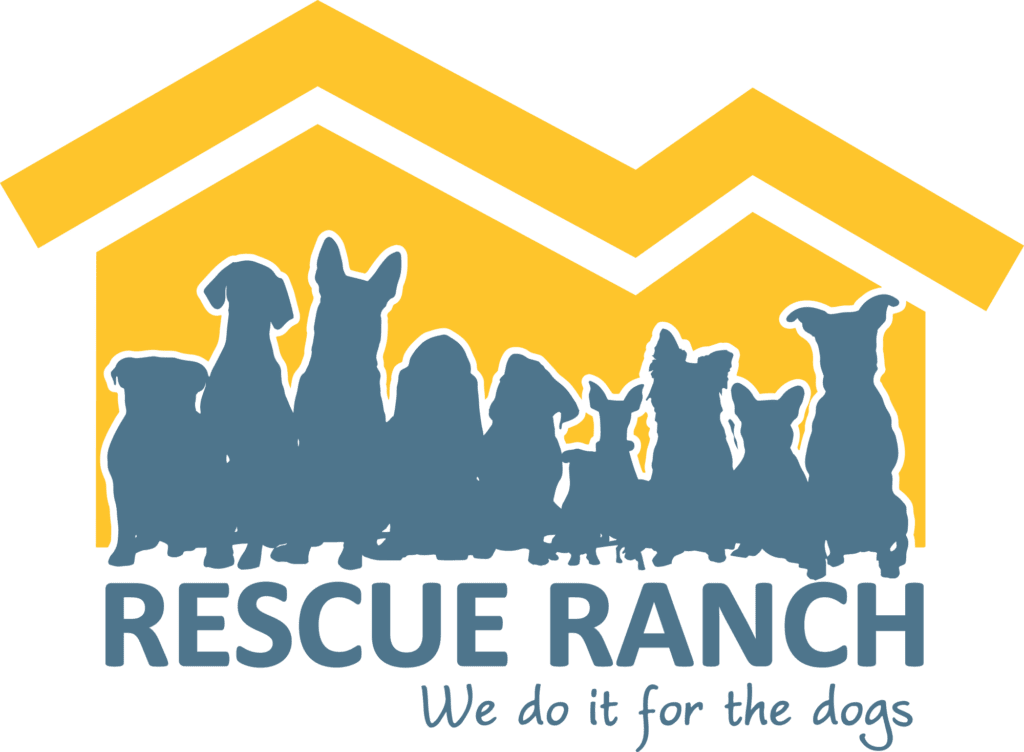Earlier this week, Operations Manager Laura Finley took staff members, AliCarmen Carico and Lacey Farber, through the parvo protocol at Rescue Ranch Sanctuary. Canine parvovirus is a difficult disease, there’s no cure. Treatment consists largely of supportive round the clock care and the administration of antibiotics to address secondary infections. It takes its toll on caregivers and can be heartbreaking. In a veterinary setting, treatment can cost thousands of dollars. As a result, Rescue Ranch usually handles parvo puppies and dogs onsite, at the Sanctuary.
Parvovirus is highly infectious
Parvo isn’t airborne, but it’s incredibly infectious. The virus is transmitted via feces, saliva, and other bodily fluids. Even recovered animals can continue to shed virus for several weeks. What’s worse, parvo can survive in the ground for up to nine years!
Dogs contract the disease from other dogs, but also from wildlife, such as foxes and raccoons. People and non-canine domestic animals can’t catch canine parvo, but they can infect an unvaccinated dog if they come into contact with the virus. Do you remember walking on that trail or in that yard yesterday? Get any dirt on your boots? When was the last time a fox, a raccoon, or an unvaccinated dog passed by and shed virus there? days? months? Has it been nine years? Not to be alarmist, but there are many subtle ways your dog can be exposed.
Symptoms include lethargy, lack of appetite, bloody diarrhea, vomiting. Parvo also strips the protective lining of intestines, which causes secondary bacterial infections that can be even more deadly than the virus itself. Roughly 80% of dogs who receive treatment, survive. Untreated cases die at a rate of more than 90%, typically within 48 to 72 hours.
Treating Parvo Puppies at Rescue Ranch Sanctuary
Stormy and her eight puppies were found abandoned in a tent under a bridge near Happy Camp. She began showing symptoms last Thursday. Most nursing moms have diarrhea, but when Laura noticed a sudden drop in energy, she knew something was up. The SNAP test was positive. On Friday, the first pup started showing symptoms. By Saturday, four of them had tested positive.
Laura decided to separate the puppies from their mom. Stormy needed all of her resources to fight the virus, which is also often fatal in adults. At four weeks old, the pups could be weaned with support.
On Monday, when I visited, Momma seemed to be improving. She eagerly ate the doggy cookies that Executive Director John Golay served up through the fencing.
The puppies, however, were still very much in flux. At their age, they want company, so the siblings were kept together in one room while under parvo watch. Then, when it became clear that they were infected, Laura organized them into four groups of two. She placed the slightly healthier ones in what I’m calling the Green Room. The others went to the Blue Room.
What A Parvo Protocol Looks Like
Stormy’s puppies are treated at six-hour intervals: 12 a.m., 6 a.m., 12 p.m., 6 p.m., not including periodic checks. It takes one person about two hours to care for eight puppies. So the midnight treatment finishes around 2 a.m.
For every session, caregivers don a clean gown, gloves, and either change footwear or disinfect their shoes when they’re done. They start by checking the parvo puppies for energy levels, fecal output, vomit, appetite, and signs of dehydration.
On Monday, most of the pups in the Green Room were eating reasonably well on their own, and there was no vomit in the crates. The little brown one that Ali was holding was more lethargic, and Laura said he had been dry heaving in the morning. A pinch test revealed that the pup was dehydrated and would need fluids.
Ali and Lacey fed the pups a formula of electrolytes and probiotics using syringes. Meanwhile, Laura changed the pee pads and cleaned out the food bowls. She replenished them with canned food mixed in water. During the session, the puppies that didn’t seem to be eating enough, also recieved food through a syringe.
In the Blue Room, the fecal output was generally higher, but the red and yellow collared pups were doing reasonably well. It was clear that, in the other crate, the grey puppy with the orange collar wasn’t feeling good and didn’t have as much energy as her companion.
In addition to food and support formula, Ali and Lacey gave fluids to all the dehydrated pups. They bathed the tubing in warm water so the fluids weren’t too cold going in.
Due to fecal output, and sometimes vomiting, caregivers change pee pads constantly throughout the day. Laura says she goes through about 16 pee pads per crate, per day. That’s 64 pads a day!
Puppy updates
On Tuesday, Laura reported that six parvo puppies were now in the Green Room. One had been swapped so that the two weakest were now together in the Blue Room. But, as I update this story on Thursday morning, I am sad to report that two of the puppies died this morning and two others still require fluids. The remaining four are holding their own, for now. Laura has adjusted the schedule to changing conditions. Momma Stormy is back to 100% energy, which is great news!
Vaccination is the best protection
Parvo is a painful, deadly virus, but vaccination can protect your dog. Although there are rare occasions when a vaccinated dog will still get sick, overall, the vaccine is very effective. And, it’s inexpensive. By vaccinating your dog you protect your pet and other animals, including immunocompromised individuals such as puppies too young to be vaccinated, senior dogs, and dogs with other illnesses. Rescue Ranch offers low-cost parvo vaccinations.









































